#homebrew region
Explore tagged Tumblr posts
Text

🐉Quetzalcoatl🐉
Contexto del diseño: Estoy creando una region homebrew para D&D llamada Azquetitlán en donde decidi incorporar a la cultura Nahua e incoporarle el panteon Mexica (ФωФ). Asique aqui les muestro su descripcion dentro del lore (igualmente cada dios tendra su descripcion dentro)

#zagreusart#aztec gods#aztec mythology#quetzalcoatl#dnd homebrew#homebrew region#my art#miren que chulada de dios me quedo este cabronsote#mesoamerica
24 notes
·
View notes
Text


B A S I C S :
Full Name: Atlas "Loam" Angra
Pronouns: They/them
Gender: Nonbinary; "gender is not a high priority to me" subtype
Sexuality: Bisexual
D E T A I L S :
Birthplace: The village of Angra in the marshy region of Pantalpan
Age: 28
Species: Half-orc, half-human
Job(s): Ranger. For several years, Loam was a wayfinder working with a small company of adventurers that escorted travellers between the big city of Akara and various towns and villages in Pantalpan. Twice, they even made the transit through the southern jungles to glimpse the isolated city of Cere! They called themselves Expeditious Expeditions.
Family: Loam comes from a happy, blended family. Their mom (Naghat 55F) is an orc and their dad (Andreas 50M) is a human. Naghat's former partner passed away; from her previous relationship Loam has two full-orc half-siblings (Makhel 35F and Ushat 33NB). They also have a half-human full-sibling (Orion 30M).
Alignment: Chaotic good
Phobias: Slight fear of heights
Guilty Pleasures: Generally speaking, Loam doesn't feel guilty about the things that they enjoy, but they can get a little shy about their sheer enthusiasm for ice cream. It's a big city treat that's a bit hard to come by in their more rural home region.
Hobbies: Loam likes to keep moving and likes friendly competitions, so they can easily be recruited into trying any sport. This could be as casual and low-impact as kicking around a hacky sack or as full-contact as fantasy rugby, which I imagine they'd adore. They're also a huge fan of the traditional orc art form of scripted, theatrical wrestling (see: professional wrestling) which is not widely enjoyed outside of their home region. They're always keen to introduce new people to its epic highs and lows.
T H I S - O R - T H A T :
introvert / extrovert
organized / disorganized
close-minded / open-minded
calm / anxious / restless
disagreeable / agreeable / in-between
patient / impatient
outspoken / reserved / in-between
leader / follower / flexible
empathetic / unempathetic
optimistic / pessimistic / realistic
traditional / modern / in-between
hard-working / lazy / depends on the task
O T H E R :
Animal: Giant anteater, for their animal companion Fernanda!
Color: Rich red soil
Song: Feelin' Good as sung by the legendary Nina Simone. Nina's voice is something like how I imagine Loam's: low, mellow and warm, with moments of rough gravel.
Number: 6, for the members of their bio-family and the members of Expeditious Expeditions.
Day or Night: Day
Plant: Jenipapo, a gorgeous tree that grows in clay soils in the tropical flooded forest where Loam grew up. The small yellow fruits are versatile: unripe, they can be used as pigment for paint, tattoos and for insect repellent. When ripe, they have a pear-like flavor and are often made into preserves (or ice cream👀).
Smell: Dirt, baybee. All manner of musky, earthy smells.
Gemstone: Loam is broadly opposed to mineral extraction, so if you made them pick a "gemstone" they'd probably say freshwater pearls.
Season: Dry season (has never lived in a four-season climate).
Place: Breaking camp on a fair-weather morning in the serrado. That fluttery, excited feeling of a journey ahead.
Food: High-protein diet with a lot of meat and beans.
Drink: Honestly water?? Loam has big "person who always has a water bottle on them" vibes. But also, growing up in a predominantly orc village, they do go hard on the alcohol when it's time to party. Sugarcane hard liquors like rum and cachaça would be their go-tos.
Astrological Sign: Sagittarius vibes
Element: Earth
#loam angra#happy to finally get around to doing an oc overview for them!!#thanks C for creating such a rich and fun world for us to play around in#you really said 'btw I based this region somewhat on the pantanal' and I said 'okay let's turn up the dial & make it Even More Brazilian'#p.s. the D&D thing of orcs having shorter lifespans than humans? nah no they don't. this is a homebrew world and we do what we want#also we're not even playing D&D - this is Dungeon World - so there!
6 notes
·
View notes
Text
No crean que me ando haciendo el pendejo con los diseños de los dioses 😭 me di unos dias pa descanzar y jugar maincra pero ya ando mejorandoles unas cosita pa subirlos con una media explicacion del rol de cada uno en la region
#zagreus rambling#de vez en cuando alguiem le da like a donde dije que queria hacer una region homebrew y me quedo asi de ;w; ay#ahorita ndo editandole unas cositas que no me gustaron del Quetza y de Tezca#porque aja tube que colorearlos y sombrearlos un poco a la carrera para imprimirlos#pero de esta semana no pasan sin subirse los dos
2 notes
·
View notes
Text
i made a dnd character. perceive my boy
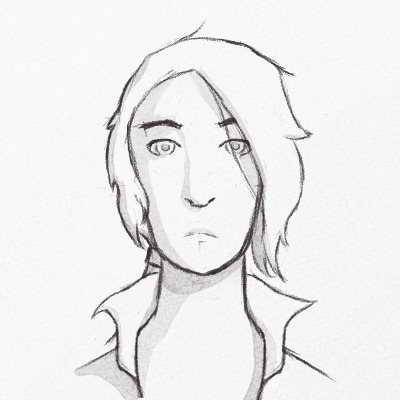
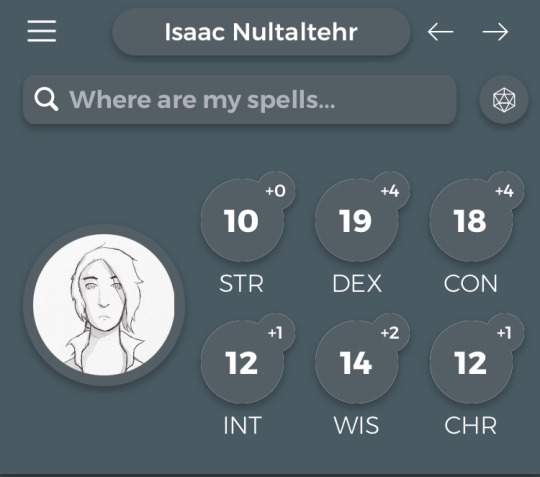
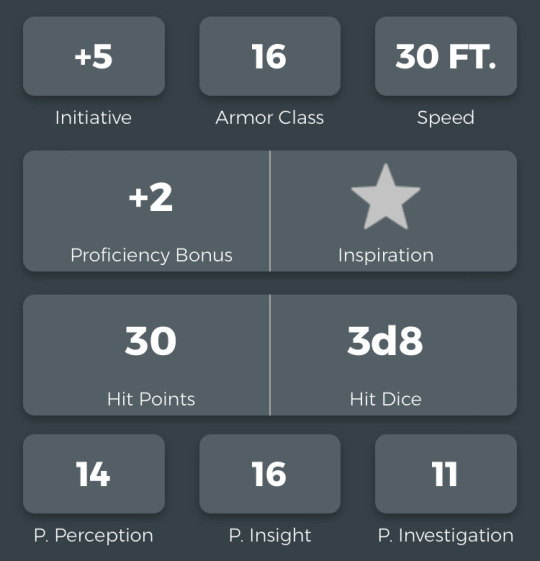
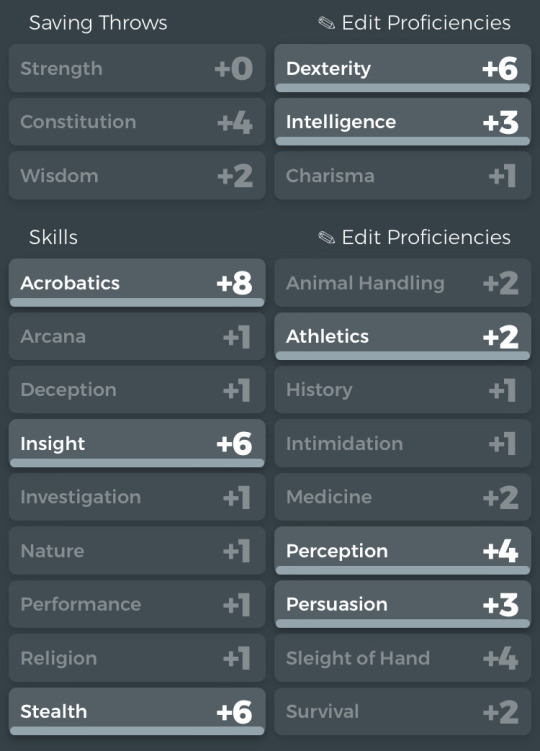

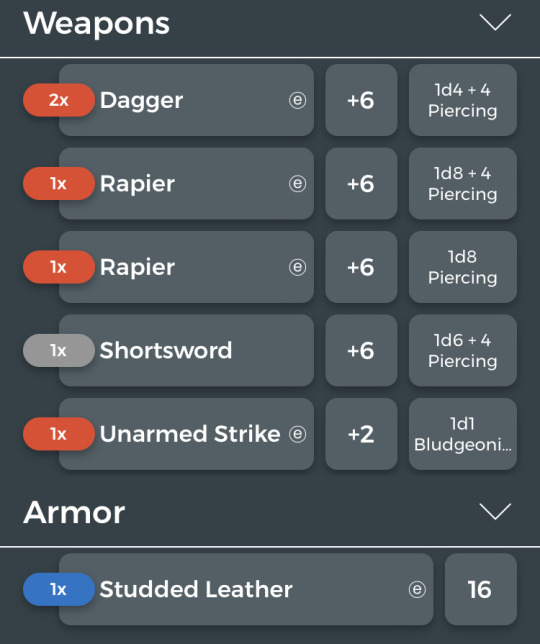
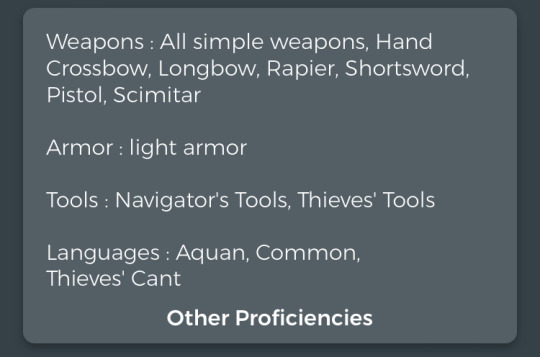
so basically his deal is that he’s a blind ex-pirate captain, he’s cursed as fuck because he lacks impulse control, and he’s a 128 year old human (don’t even worry about it).
he’s attempting to infiltrate and stop a cult with the help of a tiefling “time witch” sorcerer noble, a lizardfolk druid who journeyed across a desert and an ocean to escape her past, a half orc barbarian (who is now a werebear. again don’t worry about it) trying to rescue her kidnapped daughter, and a human fighter ex naval officer who kills pirates on sight.
more info about him under the cut
personal info
height: 175cm
weight: 170lbs
skin colour: light, ashy grey-brown (like the skin of someone who isn’t entirely alive)
eye colour: milky white
hair colour: black with grey streaks
personality traits
Extremely loyal to people he deems as his crew, especially when he perceives himself in a leadership role to them.
You are very direct and usually speak your mind without worrying about the feelings of other people.
ideals
Ambition. Everyone wants things, I am just better than most at getting them.
bonds
Being hunted by dead crew
Connected to the cursed ship
flaws
You are very impulsive and often act before thinking through the consequences.
backstory
one of the older children born to a large family. grew up near the docks on the edge of the city. had poor eyesight from a young age. his parents were merchants who had many dealings with the thieves guild due to their success with smuggling. isaac often worked with the smuggling side of the family business, giving him good connections to the thieves guild and skills with handling a ship and managing a crew. as an older teen he left his family and joined a new ship, The Umbra. he took over from the captain after killing the creature that had killed the captain and possessed their body. the umbra spent the next 9 years attacking military ships, earning isaac a large price on his head, and hunting for legends. after 9 years the umbra found their greatest legend, the ghost ship known as the pandora, and it killed the whole crew except isaac, trapping everyone’s souls aboard. isaac lost what remained of his sight to the darkness, and was cursed to sail the ghost ship and his undead crew through the night, searching for the escaped spirit of hope, and to kill the undead crew of the pandora every morning. after 100 years, isaac came close enough to capturing hope that it gave some of himself to him, giving him the resolve to be free he lost when the pandora took him. he escaped and found his way back to the city he was raised in, finding it completely unrecognisable 100 years later.
ghost ship lore
a ghost ship that sails the waters of the Archon Knout sea, both on the surface and in the underdark. any who tries to take the helm will replace the cursed captain, and their companions will be added to the pandora’s undead crew. the pandora sails forever lead by their lantern wielding captain, on an endless mission to recapture hope. during the night it sails the seas, its image shimmering under the moonlight. during the day it sails through the underdark as the undead crew attempts to kill their trapped captain. each night the felled crew rises again, desperate to complete their mission.
#dnd#dnd character#dnd charcter art#dnd5e#dnd oc#dnd ocs#dnd oc art#dnd 5e character#also like. ignore the subrace lol we picked it at random because human subraces give no mechanical changes#and our characters aren’t from faerûn (we have a homebrew world) so the regions just don’t like up#**line up#anyway yeah here’s the boy#i have plans for what feats he’s gonna take#(athlete level 4 and tough level 8. level 10 is undecided)#magnus posts#magnus art#also my dm is a hot guy (he is my boyfriend)
16 notes
·
View notes
Note
okay i know Loam Thursday is about your character, Loam, but every time i see it i think of soil that's relatively equal amounts of sand, silt, and clay.
it’s both in my heart afhsjgnsjgkdkd🥺!!! (he picked his name as a kid after learning about the many useful characteristics of loam) (his mom is a medicinal gardener and his dad literally makes bricks)
#asks#The Rulebook: firbolgs don’t have names but may adopt nicknames when dealing with outsiders#The Homebrew Setting: Loam has 3 names and a regional signifier
16 notes
·
View notes
Text
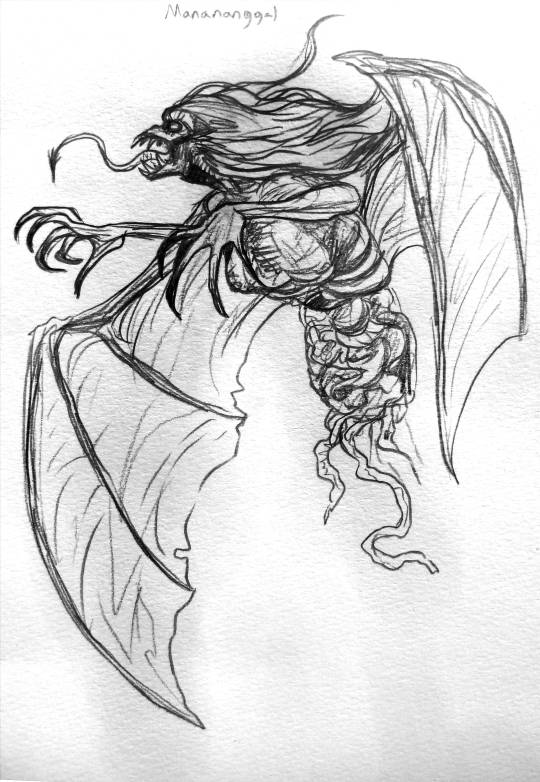
Ancardia's Greatest Monstrosities: The Manananggal
Classification: Monstrosity (horror)
Habitat: Warm, humid jungle and caverns.
The Manananggal is among the most feared monstrous undead horrors to be found in all of Ancardia, made all the worse by their evil-natured method of creation and their great calculating intellect. These creatures can assume a form which very accurately passes as a normal humanoid, which they maintain during the day. At night, they shapeshift back into their true hideous form and separate their upper portion from their lower one, leaving it behind in order to fly out and seek out victims. Like ghul, the manananggal must sustain itself with either raw flesh or living blood, and given how it is created it usually chooses the latter, and in egregiously lethal ways.
Manananggal are created by particularly sinister necromancers, usually in service of a violent cult but sometimes also on their lonesome for purposes of vengeance or threatening locals. Unlike ghul, manananggal are not conscious individuals with free will, but rather animated by the will of a possessing evil entity, usually a lesser demonic or stagnatic being. When the manananggal’s body is destroyed or consecrated, the link between itself and the fiend is severed and it can no longer control the body. One of the primary methods of monster-hunters to rid an area of a manananggal is to find the place where it stashes its lower body each night, usually in a damp cave, cellar, or in a locked room somewhere. Once the lower body is found, burning it, salting the cut-off stump, or lacing the stump with a potent natural acid such as lime juice or vinegar are the usual ways to prevent the upper half from rejoining before dawn; if the manananggal can’t reconnect with its lower half, it will wither away and die automatically.
During the day, manananggal are generally indistinguishable from ordinary folk—whatever species they choose to resemble. Many reported manananggal have taken the form of humans, and some of ratlings, hurthlings, half-orcs and the odd wood elf; manananggal in some areas are known to have disproportionately created from the corpses of women, generally in regions where femicide is more common and usually at the hands of the necromancer taking out violence against women and girls they know. This has, in some of these areas, led to the idea manananggal are all female and are not possessed of evil beings, but are the result of promiscuous, improper, or otherwise taboo behaviour in women and arise from the lady’s jealous ghost. This unfortunately tends to reinforce the social trend towards misogyny in these parts. In some regions, these horrific creations are known as Penangglan, or as Krasue, but they are all three some variation on this bloody and evil-natured ritual.
#Ancardia#Ancardian Homebrew#homebrew#DnD like#ADOM#fantasy#monstrosity#undead adjacent#Filipino mythology#undead#Manananggal#Penangglan#Krasue#upper body insides monsters#there are SO MANY of those in the Oceania and SE Asia region's folklore
12 notes
·
View notes
Text




My homebrew Space Marine chapter; the Glade Slivers.
They are based, in part, on the history of my current home region. Their home world, Lughnasa, is a Feudal World. The system's sun is incredibly dangerous and life can only exist on parts of the world that are shielded by the canopy of a mega-flora, the Myr-Tree, also known as the Worldkeeper. The inhabitants of Lughnasa see the Worldkeeper as a manifestation of the God-Emperor.
The planet is officially ruled by a governor, but most if the social and spiritual leadership is in the hands of eight farmer dynasties.
The Shatter-Bark plant plays an important role in the planet's rituals. It is a vine that grows on the Worldkeeper's roots and is known for its incredibly painful neurotoxin.
Space Marine Neophytes get seeds of the plant implanted under their skin, where it begins to sprout and grow, spreading through their arms, legs and back. With the implantation of the black carapace, the plant is removed, leaving behind distinctive scar patterns.
#warhammer 40000#warhammer 40k#space marine#space marine chapter#homebrew space marine chapter#adeptus astartes
81 notes
·
View notes
Note
hi! stumbled upon you with the humans post and honestly it would look like an awesome tattoo. anyway, I'm in a dnd group with homebrew races, classes, background ect. I decided to go with a humanoid shark race that resembles a black tip reef shark and was wondering if you have any interesting facts about them? sorry if it's weird thing to ask
Oh that's an interesting shark question! 🦈✨
Over the years I've seen a few articles on the curiosities of this species of shark, these are the ones I remember:

⭐They Have Social Behavior: As they are a small species, it makes sense that they would group together in small groups with complex social systems to protect themselves from predators. In a fantasy inspiration, they would probably always be united in large families and live in tropical regions such as beaches and reefs in large houses or villages.


⭐They Have Best Friends: It's a recent discovery and apparently happens in several species of sharks, they are usually always in pairs, always of the same sex, two females or two males, they always swim together and there is even the hypothesis that they will defend their friend. There have been cases of scientists or divers having to interact with a shark to remove a tag or hook, and another shark biting the diver lightly, which could be that shark's faithful friend.
youtube
⭐Prey for the Great Hammerhead Shark: Great Hammerhead Sharks have often been seen preying on these little sharks, being their natural predator. So a blacktip reef character could certainly feel intimidated by a Grante Hammerhead character, but nothing would stop them from being friends! Imagine a big hammerhead shark protecting his little blacktip reef friend from other bullying hammerheads sharks hehe

⭐Shy, Slippery and Full of Anxiety: In personality they are extremely shy and insecure, they are very fast and slippery, difficult to catch.

⭐They are viviparous: which means that the female becomes pregnant with an umbilical cord and all!
That's it! If other people know any more curious information about blacktip reef sharks, feel free to comment on this post!✨

292 notes
·
View notes
Text
Homebrew D&D One Shot #17




I didn't love my last witch one shot so here's a new one that's more closely based on the Ravenloft region of Tepest. I feel like this hits a more Halloweeny vibe. Also I've play-tested it twice now and the second time was my best session as a professional DM yet.
#dnd#dnd homebrew#5e#dnd one shot#green hag#van richten's guide to ravenloft#Tepest#Mother Lorinda#D&D Witches#Level 3-5
75 notes
·
View notes
Note
I'm homebrewing a D&D world that has the technological and cultural starting point of the 16-17th century Europe. It has fantasy races, but a focus in that each is diverse; there are majorities in certain regions, but no monolithic cultures, nations, or races. I am interested in adding a semi-nomadic people of artisans and merchants, largely elves, that utilizes covered and caravan wagons. My inspirational starting point is partially Romanisæl Travellers, as a few of my ancestors were such. 1/2
However, as it is a small part of my heritage and as none of those traditions were passed on to me, it's not something I identify with. As such, I'm unsure if I should even include this "traveling merchant" group. The largest Elven-dominant cultures I currently have are analogous to the pre-revolution French monarchy and Creole peoples outside of the continent. However, this group would be a much older ethnic group that adapted their semi-nomadic herding lifestyle to a more artisanal one. 2/2
Fantasy Romani travelers
To be quite honest with you, I think the trope of Romani-inspired traveling cultures in fantasy is a bit problematic, but that’s just my personal opinion. Yes, a lot of the Romani diaspora does travel, but it’s not usually due to a choice. It’s often to escape persecution or to find seasonal work, the later being less of an inherent negative. You did mention that this group has a more artisanal lifestyle, which does mirror some Romani-diaspora groups, but I think it should be ok as long as there aren’t any other stereotypes involved.
My worry is that this will become another “magical Romani-inspired fantasy culture”, although I am less worried since, as you say, you have some background and probably more knowledge than the average non-Roma. My advice would be to proceed with caution, and write this group respectfully and with as few stereotypes as possible.
-Mod Tess
202 notes
·
View notes
Text
The Rise and Fall of the Fantasy Roman Empire (part one(?)
I have said in many other posts that the popular fantasy genre, especially in TTRPG settings (official or homebrew) is almost married to the European Middle Ages aesthetics while in fact often presenting a more "early modern" society, with the results of intercontinental trade, widespread printing, growing literacy and urbanization, etc. This isn't limited to the fantasy genre though. In space opera science fiction, though not as common nowadays, the idea of a Galactic Empire (or a Galactic Republic that turns into an Empire), in some way or another, was considered a staple of the genre. Why is that? (long post incoming)
Perhaps the most notorious thing to note here are the parallels to the rise and fall of the Roman Empire, as in, straight up retellings of it sometimes (Isaac Asimov's Foundation). The Roman Empire is considered in many ways to be The Empire, its influence on Western culture cannot be overstated and people project their own fears and anxieties when analyizing its rise, decline and fall, which is perhaps one of the most complex areas of historiography for these reasons.
And I'm going to take a stab at this incredibly complex topic and its influence on fiction, so this will be inevitably simplified, but as you might be aware, the Roman Empire really didn't fall just like that. Of course, the Byzantine Empire survived in the East, and if you're one of those annoying Paradox Interactive Byzantine fans you know they called themselves "Romans" right to the very end all the way in 1453 CE (for reference, the last Western Roman Emperor was deposed in 476 CE, almost a thousand years before). And also, the theory of the "barbarian invasions" is overstated, while there was certainly conflict and violence, it wasn't that the last legionaries fell to hordes of barbarians. In fact, many of those barbarians WERE Romans themselves, fought for the Roman empire as allies, and after they built their own kingdoms they kept using Roman titles and administration. On the other hand, you can see a decline on quality of life, literacy, trade, public works, administration, in many places, that would not be surmounted until late in the Middle Ages.
So, some say the Roman Empire never truly fell, other say that it was just replaced by feudal goverments as it declined, and yet others say that there really was a sharp catastrophic decline that justifies the idea of a "dark ages". So, what really happened?
Well, again, to oversimplify the most debated topic ever in historiography, the Roman Empire was big, and when it fell, different places took it differently. As I've said, the Byzantine Empire survived with a highly modified society but still "Roman" in a sense, for centuries, with a centralized state and army, though it also hit hard by wars with the Persian Sassanian Empire and later Islamic empires and it turned more and more to feudalism as time went on. However, the big urban centers, goverment bureaucracy, literate society (for the time), trade centers in the Middle East... might have declined, but never dissapeared. In fact, when the Islamic caliphates conquered the region, their rule (again, to oversimplify) was a version of Roman administration, and it was the abundance of classical literature and literacy found in the region that impulsed the Islamic Golden Age.
Meanwhile... Western Europe didn't do so great. I won't stay to analyze the entire reasons for it, but the Roman administration was replaced first by ad-hoc kingdoms and then a complex feudal system which you might be familiar with, where noble families and aristocrats ruled their own pieces of land and titles, swearing fealty to a king, much unlike the more state-based Roman bureaucracy (you could even go to an extreme and say there was no state per se, just alliances and fealty among aristocratic families). There was a sharp decline of literacy outside of the church, there was not an state that could guarantee the public works and vibrant Roman economy, and wars and plagues were devastating (sometimes against the "Roman Empire" itself, like in Justinian's attempts at reconquering the West). In places such as France and Italy, you could really talk about a huge decline.
The place that probably took it the worst, however, was Britain. Roman Britain was part of the Roman Empire, connected to its trade routes, economy, and cultural dynamics. The separation was devastating (at least to the Romanized Britons, perhaps it was good for other peoples in the island). Anything resembling central authority in Britain just ceased to be, replaced by warlords. Cities were abandoned. There was no trade with the rest of the world. Literacy declined so much that little is known about the period. Post-Roman Britain is the closest thing to a true "Dark Ages", in fact, it might be the prototypical dark ages for the English-speaking world.
And this is where I was getting at. The decline of the Roman Empire left a strong impression in all of Europe (hence the Rennaisance, praised at the time as the return of classical culture, but that's another overly complex historiographic topic). But it was in Britain that it left the most strong impression of a true Dark Ages. This was reflected in one of the English-speaking world's most prominent works, Decline and Fall of the Roman Empire by Edward Gibbon. So prominent that it inspired Isaac Asimov's Foundation trilogy almost beat by beat (someone joked, I don't remember where, that because of the number of Galactic Empires in science fiction, Gibbon is the most influential sci-fi writer)
And you can guess where this is going with fantasy. While I can't say Tolkien, the grandfather of modern popular fantasy (the father is Gary Gygax) copied Gibbon 1:1, you can feel the same conception of the British Dark Ages sweeping through his work. Ancient ruins of the glorious past in what could be termed, a bit tongue-in-cheek, as post-apocalyptic fantasy. Lord of the Rings reads sometimes like something set in the Early Middle Ages, the so called "Dark Ages", not so much elaborate plate armor and vibrant cities, but rather chainmail armor and abandoned ruins (like the romantic conception of the Fall of Rome, I haven't even touched on romanticism here...). This is of course not a coincidence. Tolkien's favorite inspirations (Beowulf, Norse myth) were from the Early Middle Ages.
And since this scenario was already popular in the English-speaking world, and RPGs such as Dungeons and Dragons (again, the father of popular fantasy) were based on Tolkien, you can see how this shaped our conception of not only the real-life Middle Ages, but also the fantasy genre in... general. You know the "Points of Light" "setting" for D&D 4e? Read all I've told you, and think about it. Really think about it.
As an addenum, I'm from Latin America of course, and unfortunately, our own fantasy and science fiction was never as popular as the English ones. However, there is something interesting to consider here. The Roman Empire in Iberia "fell" to the Visigoths, which tried to keep a kind of Roman administration, as successors to them. The Visigoths were in turn replaced by Al-Andalus, one of the most unique cultures of all times. It was the struggle between the Christian and Muslim kingdoms (the so-called Reconquista, a simplified and supremacist narrative that forgets about all the cultural interaction that existed for centuries) and then the conquest (or rather plunder) of America which left the most striking markd in Spanish and Portuguese classical (pre-XIX century) literature. What marks did those events leave in our fiction here in Latin America? Which on its own has become its own thing beyond Iberia...
If you want to read more about the *fall* of the Roman Empire, I cannot recommend enough this three part series from the blog ACOUP (I'll leave you to figure the acronym) which I took much information for what I said in this post from, and goes into much more depth which I could ever hope to: 1, 2, 3.
For my part, I actually intend this to be an introduction to a topic I've been wanting to talk since forever (a few days ago): Space Empires. Galactic Empires and Republics. You might think they are a dead trope, you might think "'well, they're more of fantasy than realistic science fiction", but I'm not exactly to prove that Star Wars is unrealistic, but rather to talk about the worldbuilding and narrative choices (and yes, perhaps more than a bit bit of economics, politics and logistics as well) of space empires, and what are some other options you could consider if you're building a space setting.
If you liked this post, and would like to read more like above, please, feel free to follow, and also consider donating to my ko-fi, as I intend to write more in the future:
#cosas mias#worldbuilding#writing#fantasy#history#science fiction#roman empire#long post#biotipo worldbuilding
106 notes
·
View notes
Note
okay, wait, I'm so interested in your "no player revivify spells" rule. Would you be willing to elaborate on your house ruling for that???
I would love to, thank you so much for asking!
It's 99% because of story reasons, 1% because I feel that deaths are fairly meaningless when they can be immediately undone.
In my homebrew world, Winyul, there are no gods but entities called Titans. They are the manifestations of wants, desires, hopes, memories, experiences, knowledge, and thoughts. Titans form around a community, be it a city, a mercenary band, even between lovers. The prime Titans are those who oversee the entirety of a region and all other Titans in that region are considered part of that prime Titan. [I have a bit more information on Titans in my little packets - link!]
The Titans are the arbiters of life and death on Winyul. There are no spells of resurrection that have ever worked, as no magic can find the threads of the person lost. Upon death, souls are weaved into their respective Titans, their pattern becoming a part of the Titan itself. To resurrect someone, their pattern must be ripped out of the Titan.
The Titan which holds the persons pattern, their soul, must be sought out and pleaded with, in the hopes that they might ravage their own weave. Resurrection has always been historically rare, invoked only in times of great need. Typically, those pleading on behalf of a resurrection will give up magical items to the Titan. That magical energy helps a Titan repair the damage being done by tearing out the soul. During the False Wisp crisis now, the Four of Four are the only ones the Titans have been resurrecting.
Resurrection also comes with its own risk. The more death one experiences, the tighter ones soul is stitched into the Titan. Multiple deaths and resurrections risks leaving behind threads that could not be undone. This means that, past a certain point, those being resurrected begin to forget things - as their memory, those threads, have been left behind in the Titan. It can work the other way as well, where some threads which don't belong come along during the resurrection. Die and be resurrected often enough, and eventually you're going to end up an entirely different person.
It's led to some amazing moments in campaign - from Adra, Ilsa, and Talee kneeling for hours in the snow over Loam's body begging for his resurrection, to the playful ribbing of having to haul Ilsa's corpse up a ladder which took eight hours to fully climb. The current death count in campaign is Ilsa leading with three deaths, Loam in second with two, Talee with one, and Adra still untouched by death (not for my lack of trying huhu).
Thank you again for asking! If you have any more questions, don't hesitate, love thinking and talking about Winyul. Cheers!
87 notes
·
View notes
Text



I think I finally perfected my Tav
#zagreus rambling#bg3 tav#god bless the plus size tav mod#LOOK AT HOW HE LOOKS FUUUUUUUUUUCK I knew once I could make my Tav fat he would look incredible#bg3#He is a sorcerer drow btw#“seldarine” drow but I headcanon him being from outside faerun#*cough* my homebrew region *COUGH*
3 notes
·
View notes
Text
Here's a little sneak peak on what to expect on the page talking about the Tu'la region!
(Aka, basically most of the information out of what's likely going to be 2-paged section since there's not a lotta info on Tu'la lol)
Totally not sharing this because I made art I'm proud off .>. (Edit: I just realized there's some information I forgot to put into this, so the final version will have a few more words :p It's just the characteristics on cursed Meif'was - aka people who were cursed into being Meif'was)

I've said it before (somewhere), and I'll say it again. I want this pdf to be as beginner friendly as possible, whether it be for both new players and new DMs.
I won't be adding detailed stuff from specific sources, or be blatantly taking things from copyrighted material and directly placing them in here (I think the closest thing that might be iffy is stuff I've taken from Daggerheart that's intended to help players and DMs create custom societies/communities, but hopefully it's okay since I'm only taking the name and basic descriptions they give rather than the entire card). - This feature can also be applied to existing regions to flesh them out if you want to take things into your own hands and explore regions that have not been explored yet in MCD/DR.
Now, if you read it, I'm sure some people might be a bit upset that there's no homebrewed Meif'wa race made from scratch. Here's the thing...there's a lot or races in D&D 5e (2014), and there's even a "Lineage" rage from Tasha's, which essentially allows you to make your own race.
And to be honest...not much is known about the characteristics of Meif'was outside of them looking and occasionally acting like cats? Besides that, I couldn't really find anything that could help them stand out as their own race.
So, instead of making it a whole thing... I've instead put down a suggestion that, since the players are the creators of their characters, that they should be able to use any race (within reason) to define their character's appearance and function. This will also be applied to the Lu'pine/werewolf race, in some degree.
Personally, I'm someone who tends to view races, or "species" as they're now called since the 2024 version, as a guideline. Simply put, if I want my character to look a little strange or have a unique feature from the norm, I'll take a race that suits it best and change it up.
Take Tieflings for example. Tieflings are depicted to be devil/demon-like, but in most cases, even in D&D's Forgotten Realms, demons and devils can look like a lot of things, and there's even some anthropomorphic entities that are classified as demons/devils. What's stopping you from playing a fox-like character with an infernal heritage? Or someone who looks like a basic human but with infernal traits?
There's also the Owlin race, which is depicted to being an anthropomorphic owl that can be medium or small sized. I'm someone who likes to draw human faces, so what's stopping me from playing a human-looking guy with large bird-like wings?
I want this PDF to encourage creativity and out-of-the-box thinking. I've played with many players and GMs who are way too stiff with their creativity, mainly when it comes to character creation.
Sure, a human is meant to be generic, but what's stopping you from making them be more doll-like thematically? You're not changing the way they function, but you are changing the way they appear and behave. Systematically, this way of creativity is harmless.
There are subraces of all kinds, and all of them can't be covered entirely in official content. Another reason I'm not adding homebrew races or classes into this is not just because of balancing reasons, but because some DMs might not be open to homebrew, or some players might get nervous or uncomfortable with homebrew creations (like I am).
I do plan on making a page that'll be a kind of guide on how to "mix and match" certain things, though mainly in the terms of backgrounds. Did you know that, apparently, you can change your background feature to whatever feature you want if you're not happy with it? I DIDN'T UNTIL EARLIER THIS WEEK!
I'm also adding a few examples of homebrewed rules some games tend to have, since I'm sure some (or most) members of this community are not experienced in D&D 5e on a personal level. (Examples are bonus action healing potion, secret death saves, etc. I will be throwing in a personal rule I made for my games as an option.)
Anyways, enough of me rambling. Here's a closer shot of the Meif'wa guy I made! Was gonna make three to show range, but I got tired and I ended up liking him a lot -w- No name for him though... But I might just keep it that way for fun lol

Hydrate!
#art#dnd#dungeons and dragons#aphmau#aphmau mcd#aphverse#original characters#mcddnd#minecraft diaries#meif'wa#dnd 5e homebrew
27 notes
·
View notes
Note
Hi! I browsed your FAQ and didn’t see anything about this, so I’m sorry if this has been asked before and I missed it, but is there a way to unlock the other StreetPass games and/or speech bubbles using homebrew? They don’t appear to be on the Hshop, though I see a few versions of the StreetPass Mii Plaza on there.
glue here!!
there IS a way :D !! to unlock the other streetpass games, the additional content should be in HShop as DLC (there's a link to HShop here with the QR code). make sure the region of your console matches the dlc's region you're downloading (idk if anything will happen... haven't tested it out myself)
don't worry--i didn't know how to unlock the additional content until someone else told me to lol
as for the speech bubbles, you gotta WORK for those. you can get them with streetplaza tickets, which are earned by playing the games. the ticket exchange booth will sell a handful of random hats/speech bubbles, and the selection changes about once a day.
hope that helps ^^
38 notes
·
View notes
Text
How do you keep from Copy/Pasting existing Cultures into your Worlds?
Basically just as the title says, and I'm sure there's been pleeeeenty of discussion on the topic, but I'm genuinely curious what makes your cultures unique and original (especially when the modern aura of writing is "everything's been done"). Furthermore, is having a copy/paste culture a bad thing? For context, I'm primarily a Game Master (GM) who also on occasion writes as well as works in the TTRPG actualplay space. When you have an audience (whether friends or fans) is it necessarily a bad thing to have familiar locations, themes, and even characters that mimic real life? Can it be easier for an audience to just assume we're in "Ancient Rome" or "Habsburg controlled Austria"?
For me I do like creating totally original locations with their own weird political systems influenced by magic, gods, monsters, and anything else fantastical--BUT sometimes I find a setting is more interesting of just "what if Romans could directly interact with their deities?". For me I just find the idea of almost "alternate history" but in my uniquely fantastical setting interesting. However, I also understand that some people like genuinely different worlds with no trace of the real world left behind.
When creating unique cultures I try to combine elements to create something more unique. For example I'm currently working on the ancient periods of my current homebrew world, and specifically in a portion I haven't particularly worked on before. In Evrosea, a sort of "ancients world" where Greco-Roman culture lives on well into the medieval 15th Century (of course technology has changed and evolved) I find myself studying more ancient histories. I knew from before I fully began working on worldbuilding Erosea that there was some sort of "Roman Empire" which spread its tongue as a sort of lingua franca across the continent of Dulgren (aka why Common exists in my D&D world). Also originating from the region of Evrosea was the sorta monolithic pantheon of "new gods" (aka Catholicism). So I have the ideas of imperialism and religious importance in this region. So the very clear start was Rome itself, but how could I make this Rome unique? Well here's what I found from my research on Ancient Rome:
Many pre-settlers, and even contemporaries of Ancient Rome, in Italy were nomadic grazers and herders.
The Aeneid, which tells one of the many origin stories of Ancient Rome, ties in the ancient Greek tale of the Trojan War, and makes Rome the successors of Troy.
That many of their religious practices were tied up with the Senate (especially after the abolishment of the crown).
Finally, while perhaps never directly ruled by the Etruscans, their neighbors were much more confederate like and were similar in culture rather than being a unified people or kingdom.
Taking the information I found I twisted and jumbled much of this random history and constructed a group of nomads who controlled the fertile valleys of Uvemos (home region of the ancient Carinaens, my replacement for the Romans).
Many of these nomads worshipped similar sounding gods (if not outright the same gods), and most of them lived off the lands of Uvemos. Only a select few of whom ever settled into cities. However, long after the first nomads of Uvemos walked the hilly countryside arrived a band of pirates and raiders, terrors of the ancient world, many knew not their names, but they quickly accrued a nickname, "The Sea People" (see Sea Peoples on Wikipedia for more, TL;DR a bunch of random marauders who attacked or even helped cause the collapse of some Bronze Age Civilizations). One such pirate was said to be the Prince Laogonus, an exile from Apeiros, who was said to be a direct descendant of the God King Ulios himself. Laogonus settled down on the banks of Janian Sea in a small dirt settlement near to the roaming tribes of Uvemos. Many years later the small city of Carina was established as a blossoming trade hub by the many different tribes of Uvemians. Of these tribes was born a Chieftain's daughter, Aurora. Aurora was said to be descended from the god blood of Ulios, and when she prayed to her great grandsire on the eve of battle she was enveloped in holy light-- thus becoming the world's first cleric. Of her legacy were many rituals formed and practices established, and the civitas mille clericorum* was born.
*(civitas mille clericorum) meaning "city of a thousand clerics," named after the heavy religious undertones established by the first cleric Aurora, at least according to legend.
Super cool right?? I combined some other ideas than the ones I established such as the Sea People from the Collapse of the Bronze Age, as well as these kind of Shinto-like-beliefs in the Carinaen religion, which, to me at least, seems the most like what Ancient Roman beliefs would look like to us today (though I didn't really get to talk about in my blurb). I like taking existing pillars of cultures and extending them, now rather than just being a complete Roman rip-off there's more of this nomadic or tribal culture, at least to early Carinaen history, there's more of a nautical legacy (unlike Rome, who didn't establish a truly working navy up until the Punic Wars), and finally the city of Carina is a beacon for holy warriors and classes like Paladins and Clerics (again this is D&D so that's oriented towards that).
But tell me what you think, and how best do you come up with your fictional cultures/countries? Do you merely copy off of pre-existing cultures or do you fully work from the ground up? I'm super curious to hear what you all have to say!
I'm also tagging a couple friends since I'm curious of your responses @hessdalen-globe, @northernthiefcranberry, @kerghoulen, and the ever wonderful @somethingclevermahogony.
Also guys I need you to pull me out, I'm this close to dropping out of the arts and trying to get into Harvard to do Ancient Studies. Send Help.
#writer things#worldbuilding#writers on tumblr#fantasy#dungeons and dragons#d&d#d&d teaser for my campaign#writing#original story#fantasy worldbuilding#fantasy fiction#developing countries#I don't think that's what they meant but technically true#roman myths#roman mythology#inspired#creative writing#ancient history#ancient rome#antiquity#fantasy world#campaign#dnd campaign#advice#discussion#let’s discuss#discusses
22 notes
·
View notes